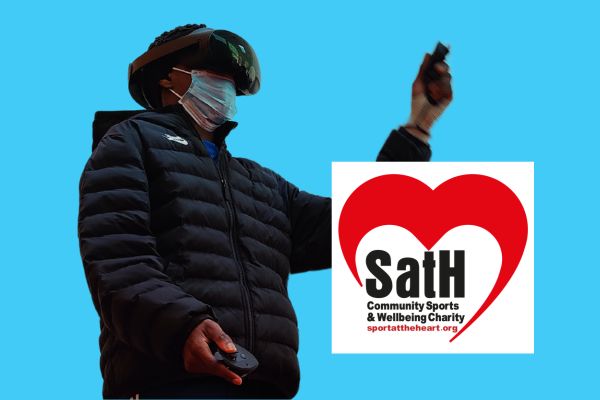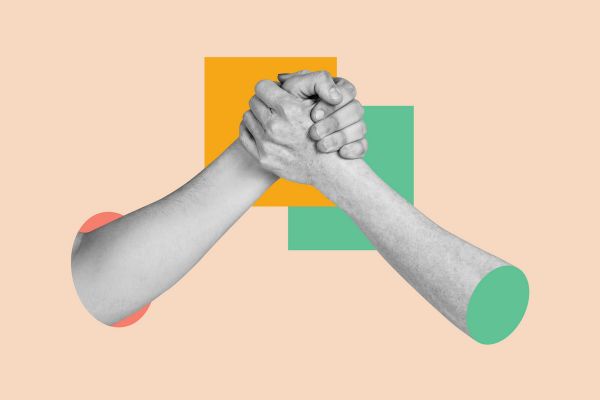Insights
INSIGHTS
All Topics
Workbook to help charities prepare for AI
06 Dec 2024by Laura Stanley
We look at a new workbook from Salesforce designed to help charities get ready for AI, from preparing data to supporting staff
While the technology behind AI has been around for a while, the explosion of tools such as ChatGPT, Gemini, and Microsoft Copilot – to name just three – have made AI more accessible than ever to organisations of all sizes, budgets, and digital maturity. Three in five charities say they are using AI tools in their day-to-day operations, according to the 2024 Charity Digital Skills report, a vast increase on the 35% who said the same in 2023.
However, there appears to be a gap between getting to know AI and actually implementing it. The majority of those using AI in 2024 are trialling the technology informally, notes the Charity Digital Skills report, with only 11% saying they are using AI tools across their organisation. With up to 90% of charity professionals are using AI on an individual level, it’s clear that the sector recognises how AI can improve the way we work but remains unsure how to adopt it on an organisational basis.
This is where the Nonprofit AI Readiness Workbook from Salesforce comes in. The Workbook is designed to help charities create an AI strategy and plan their approach, with awareness of both the benefits and risks of AI. The workbook advises that charities take the time to support employees and ensure that they are prepared for how new technology will affect their organisation.
“As leaders, we all want to fully take advantage of the capabilities of AI to create efficiency and drive growth,” explains the workbook. “But we also have an important responsibility to ensure that AI is safe, inclusive, and trustworthy – and that our organizations and the employees we support are prepared to adopt new ways of working. Maximizing both AI and human capabilities requires a synergistic approach.”
Below, we share some of the highlights from the workbook and how charities can get ready for AI in 2025 and beyond.
How to get ready for AI
Build trust
The workbook highlights “the trust gap” when talking about AI – while it can create text, images, code, and accelerate workplace productivity, almost three quarters of employees believe that generative AI specifically introduces new risks. For CEOs, however, it’s full steam ahead – AI is their number one priority.
For charity leaders, it is important they bring their staff, volunteers, donors, and beneficiaries on the AI journey with them. As Salesforce points out, “Just like meaningful relationships between nonprofits and stakeholders, AI’s success must be based on trust.” Stakeholders must be able to trust that AI outcomes are effective and accurate in order to have confidence using the technology.
The workbook offers five guidelines to “steer the development of trusted generative AI”, allowing charities the surety that they are using AI responsibly and ethically, with the knowledge that it will make a real difference to the communities they serve. The workbook shares best practices for charities to follow and links to an informative webcast to help charities get ready for responsible AI.
As with every chapter, there is an area for self-reflection and notes to get charities started with self-assessment and facilitate deeper discussions as they start to adopt AI.
Prepare your data
AI is only as effective as the data it learns from. Charities need to ensure they have the right data and data infrastructure to put into AI tools to get the best outcomes. But what does it mean to be data ready? What does the right data infrastructure look like?
The workbook provides a useful framework to help charities understand where they are when it comes to looking after their data. There are four categories – Beginner, Traditionalist, Trend-setter, and Master – all with different data habits and capabilities.
“Understanding where you are now, and where you want to go, is critical for developing your AI readiness roadmap,” Salesforce explains. The second chapter of the workbook ends with a questionnaire to help charities determine their data and AI maturity in a straightforward manner.
Support your people
The third chapter of the workbook explains how AI can reduce the burden of everyday administrative tasks and allow charity workers to dedicate their time to “focus on impactful areas of your nonprofit”.
The workbook displays a chart to help charities think about specific tasks employees perform and which would be best suited to automation based on cognitive load and organisational impact.
The workbook explains: “Tasks that are hard and take high cognitive load while producing low organizational impact are ready for augmentation to help employees work SMARTER. Tasks that are boring, and take low cognitive load while producing high organizational impact are ready for automation to help employees work FASTER.”
The workbook provides a plan for training, upskilling, and managing change to help charity professionals get to grips with AI. It sets out seven skills sets for employees to sharpen, from data literacy to prompt writing, and invites charities to map their tasks onto the cognitive load and organisational impact framework.
To find out more about how to get ready for AI, you can download the full workbook here. It also links to Salesforce’s AI Strategy Guide and other resources to help charities on their AI journey.
Laura Stanley
More on this topic
22 Apr 2025by Laura Stanley
Charity Spotlight: How Yellow Boat of Hope Foundation transformed services with digital
Recommended Products
Recommended Products
Featured Products
Our Events
Charity Digital Academy
Our courses aim, in just three hours, to enhance soft skills and hard skills, boost your knowledge of finance and artificial intelligence, and supercharge your digital capabilities. Check out some of the incredible options by clicking here.















